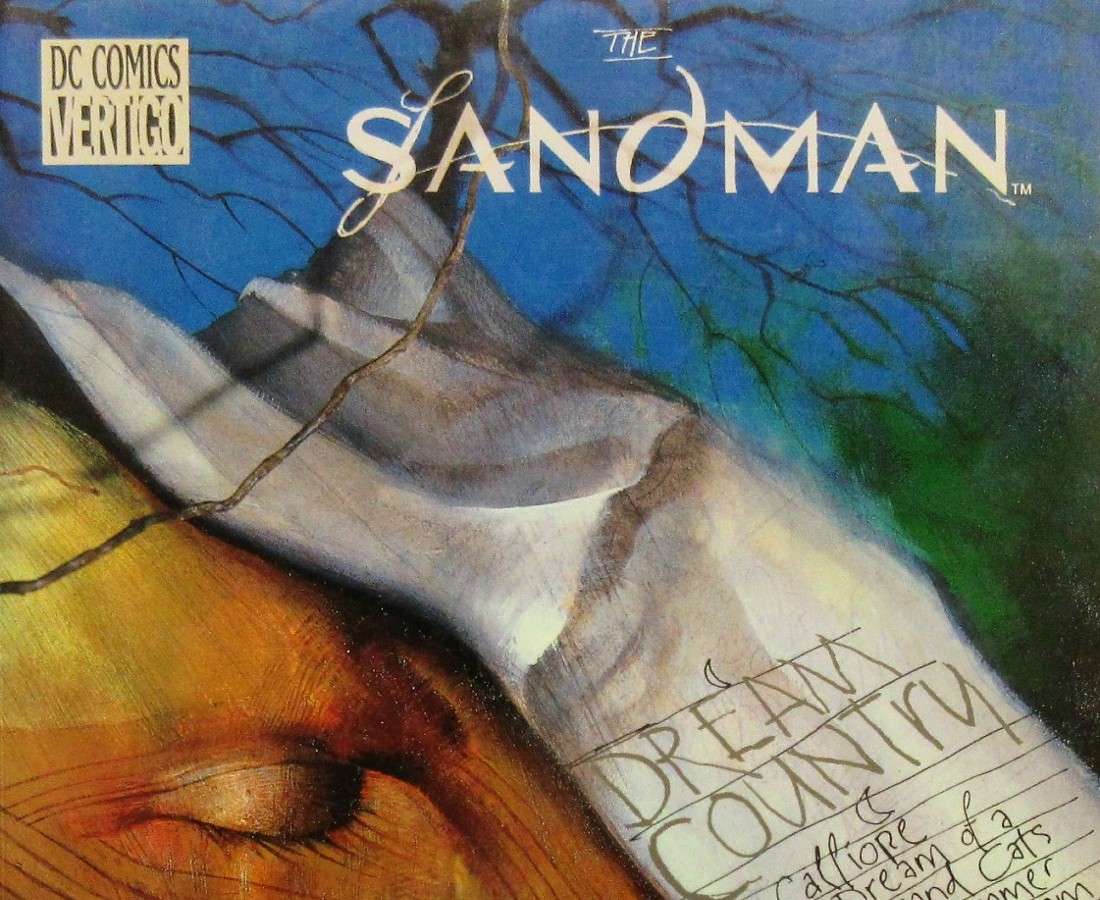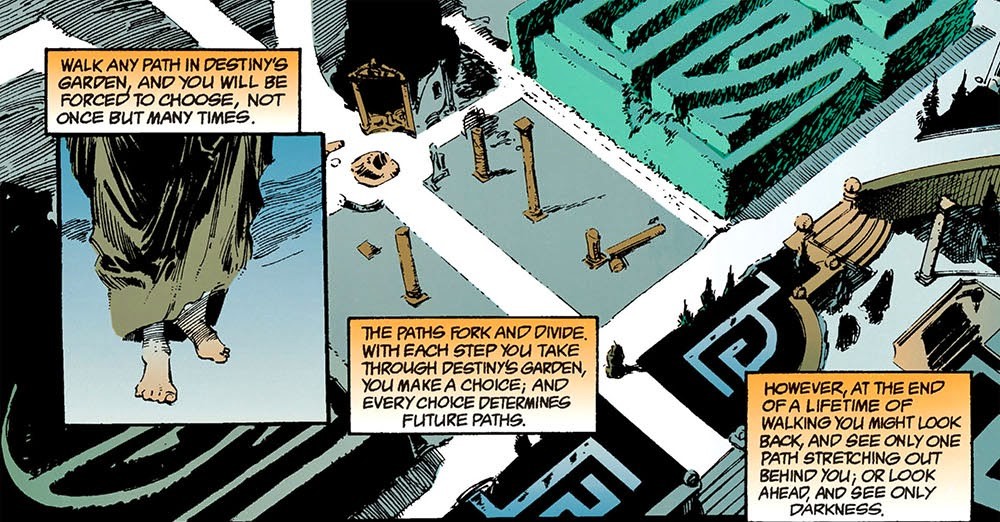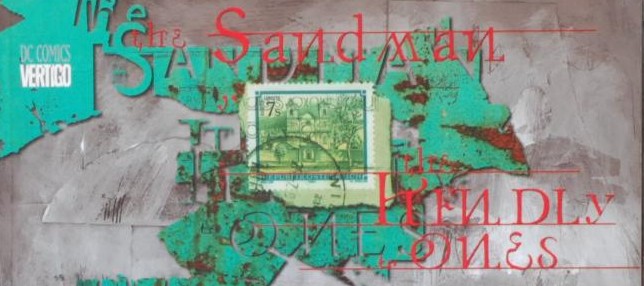Dream Country is the shortest of The Sandman volumes — it’s just four single-issue stories, plus the script for one of them. But because of that, it’s actually a good sampler of The Sandman. It doesn’t require a lot of prior knowledge (do you know who Dream is? Do you know who Death is? You’re pretty well caught up). To me, it’s where Neil Gaiman actually established what he was doing with The Sandman.
“Calliope” with pencils by Kelley Jones and inks by Malcolm Jones III, is probably the closest to the earlier horror of The Sandman. Let me be clear: Calliope gets raped repeatedly and while it’s presented as pretty horrific, it still happens. She’s constantly vulnerable and not in control of her existence.

So much of “Calliope” feels like Gaiman trying to deal with the conflict of creativity and how success is by nature, inherently exploitative.
Yes, the horror of this is that we know Ric (as he started to call himself) was keeping an immortal woman captive and raping her for inspiration and then still running around and saying he’s a feminist. But this happens in real life too — men claiming to be allies while taking advantage of women behind closed doors.
I like Kelley Jones’ pencils here better than I used to and Malcolm Jones III’s inks bring out the best in them. The art ends up bold and melodramatic — all angry closeups and exaggerated facial expressions. It works well with the nature of this story, which is basically a sinister fable (a tone The Sandman tended to do well).
Dream swooping in and cursing Ric with an abundance of ideas until he releases Calliope is neat on the surface but I do wish Calliope had more agency in what was happening. I didn’t necessarily need a perfect, happy ending for her, I would’ve liked if she’d been able to make her own choices.
“Dream of A Thousand Cats” (with art also by Kelley Jones and Malcolm Jones III) has the sort of whimsy I come to associate with The Sandman as it continues — yes, like much of the comic going forward, there are moments of horror here, but also moments of kindness and playfulness. The story isn’t as cutesy and cloying as it could be, thankfully, and the idea that dreams can reshape the world is a hopeful one.
“A Midsummer Night’s Dream” is, of course, a masterpiece. Oh, don’t get me wrong, it’s entirely pretentious but somehow Gaiman deftly accomplishes everything he set out to do with this, and Charles Vess’ lovely and lush art compliments the story perfectly.
All in all, there’s really not that much to “A Midsummer Night’s Dream.” After the deal he struck with Dream, Shakespeare and his company have to perform the titular play for an audience of fairies. That’s really about it. But it’s not so much about what happens but how.
In some ways, this issue is the turning point for the rest of The Sandman as it subtly sets up themes that will continue through the rest of the run. Such as this (rather famous) quote below:

That certainly has been present previously in The Sandman but it’s a subtle bit of foreshadowing of what is to come. I don’t know at what point when Gaiman knew where The Sandman would end, but this points toward some conclusion.
I joked on Twitter that this is what made me an English major, but really, I was mostly an English major before I was one. This issue did hit all of my particular sensibilities as a teenager reading it but I think I love it more now. It’s just a thing of beauty.
Sadly, after this issue, it’s almost easy to overlook “Façade,” a story featuring minor DC character Element Girl. It’s definitely not peak The Sandman, but it does have some thoughtful things to say about what happens to superheroes once they’re forgotten. Or, at least, it tries to.
Urania Blackwell lives alone and her only source of income is her pension. She’s haunted by her powers and is clearly suffering from post-traumatic stress disorder. She just wants to die.
After an encounter with Death (who was just in the neighborhood), Urania realizes how to take her life in her hands — she just needs to have a conversation with Ra, who gave her her powers. In effect, she dies.
Yes, that’s not a great message — if you’re miserable, you should just kill yourself — but I don’t think that’s exactly what was intended. Urania had no means of escape but by communicating with Ra, she was able to accept who she is and become something else. It doesn’t quite work, though.
I appreciate Colleen Doran’s pencils on this but I think Malcolm Jones III’s inks are a little heavy in places. Still, Doran brings a fashionable elegance to this issue, and the variety of artists to suit storylines or issues going forward becomes one of The Sandman‘s greatest strengths.
Dream Country is still my go-to starting place for new readers of The Sandman, especially for non-comics readers who want to check this series out. If people are sold on this, they’ll likely like the rest of the series.




